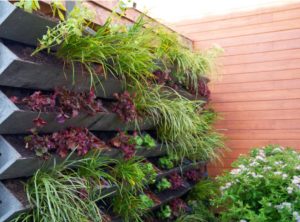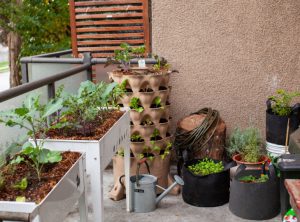In the ever-evolving realm of commercial landscaping, businesses increasingly turn are to innovative solutions to elevate their outdoor spaces. One such marvel gaining traction is the integration of vertical gardens and hydroponic systems. These space-saving and eco-friendly designs enhance business premises’ aesthetics and contribute to a healthier, more sustainable environment.

Understanding Vertical Gardens and Hydroponic Systems:
Vertical gardens, also known as living walls, are a form of urban greenery where plants are grown vertically on walls or other vertical structures. Paired with hydroponic systems, which involve growing plants without soil, these gardens offer myriad benefits for commercial spaces. Hydroponics uses nutrient-rich water solutions to deliver essential minerals directly to the plant roots, promoting faster growth and increased yields compared to traditional soil-based methods.

Space-Saving Marvels:
One of the primary advantages of vertical gardens is their space-saving nature. In urban environments where real estate is at a premium, businesses can maximize their outdoor spaces by installing vertical gardens on walls, fences, or other vertical structures. This utilization of vertical space allows businesses to create lush green environments without sacrificing valuable ground space, making it an ideal solution for areas with limited square footage.

Eco-Friendly Aesthetics:
Vertical gardens go beyond being a simple landscaping choice; they are a testament to a business’s commitment to environmental sustainability. These living walls act as natural air purifiers, filtering out pollutants and contributing to improved air quality. Additionally, they provide insulation, reducing energy costs for businesses by regulating temperature and promoting a more comfortable outdoor environment for employees and visitors alike.

Real-World Success Stories:
Several businesses have successfully incorporated vertical gardens and hydroponic systems into their commercial landscapes, reaping the rewards of enhanced aesthetics and environmental sustainability.
Case Study 1: The Vertical Oasis
A corporate office in the heart of a bustling city transformed its concrete façade into a lush vertical oasis. The company created a visually stunning exterior by installing a hydroponic system, significantly reducing its carbon footprint. Employees reported increased well-being and productivity as they enjoyed the calming effects of the living wall during breaks.
Case Study 2:
Rooftop Revolution, A trendy restaurant in an urban setting, took advantage of its rooftop space by implementing a vertical hydroponics garden. The vibrant display of herbs and edible plants added a fresh, natural element to the dining experience. It provided the kitchen with a sustainable source of locally sourced ingredients, reducing the restaurant’s ecological impact.

Actionable Ideas for Businesses:
For businesses looking to journey towards a greener and more visually appealing environment, here are some actionable ideas:
Selecting the Right Plants:
- Choose plants that thrive in vertical conditions and are well-suited for hydroponic cultivation. Consider factors such as light requirements, water consumption, and maintenance needs.
Integration with Corporate Branding:
- Incorporate the company’s brand colours or logo into the vertical garden design. This enhances brand visibility and creates a cohesive and visually appealing atmosphere.
Educational Elements:
- Integrate informational signage or interactive displays to educate employees and visitors about the environmental benefits of vertical gardens and hydroponic systems. This adds an educational component to the aesthetic appeal.
Collaboration with Local Artists:
- Engage local artists to create custom designs or murals that complement the vertical garden. This collaboration can infuse a unique artistic touch into the space, making it a focal point of interest.
In conclusion, vertical gardens and hydroponic systems are not just landscaping trends; they represent a transformative approach to commercial outdoor spaces. As businesses seek sustainable and visually striking solutions, these space-saving marvels offer a perfect blend of aesthetics and eco-friendliness. Through real-world case studies and actionable ideas, companies can harness the power of hydroponic hues to create outdoor environments that leave a lasting impression on employees, clients, and the planet alike.